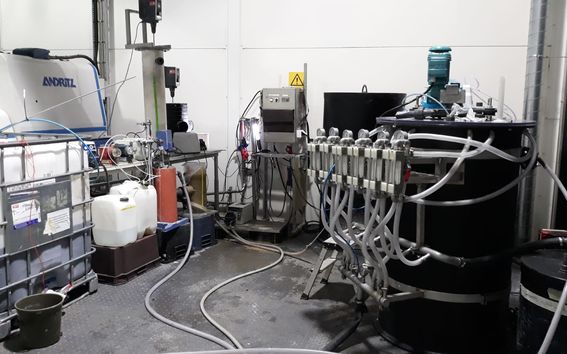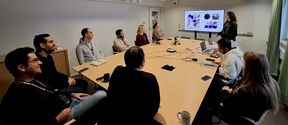Ecological fertilizer from wastewater nutrients

Wastewaters contain large amounts of phosphorus and nitrogen, which are valuable nutrients. Aalto University’s NPHarvest process enables recovery of these nutrients as clean ammonium sulfate and sludge containing phosphorus and calsium, which can be used as ecological fertilizers. The process produces ecological fertilizer as an end-product and, at the same time, saves energy and natural resources by recycling nutrients of wastewater.
Nutrient recovery is based on membrane filtration technique
Solids and phosphorus in the wastewater are separated in ballasted sedimentation using a side-product of lime production. The nitrogen recovery process is based on transforming ammonium nitrogen to ammonia gas. Ammonia is separated by stripping through a gas permeable hydrophobic membrane. This enhances the efficiency of the process significantly.
Nutrient recovery happens as a part of normal wastewater treatment process when using the NPHarvest process. The process is beneficial especially to those wastewaters which have more nutrients than the usual municipal waters. Suitable wastewaters for the process are for example reject water from digestion, urine, landfill leachate and septic waste. NPHarvest technique has been proved to be efficient during pilot testing in real environments.
The process has commercial potential in agriculture and wastewater industry
The process can be commercialized in the agriculture business as all the demand for fertilizers in Finland could be fulfilled by recovering nutrients from different biomasses and wastewaters. Also, those farms that have their own digestion tanks, can economically benefit from the process as the digestion reject water can be used for nutrient recovery and produce a recycled fertilizer product.
Reject water is also produced at wastewater treatment plants and biogas plants. Composting plants also produce nitrogen rich liquid wastes. Besides these reject waters, water originating in landfill sites has high nitrogen content. Hence, there is a demand for a technology that enables nutrient recovery from liquid wastes. A business model for NPHarvest process and its end-products has therefore been developed.
The project has been funded by the Ministry of Environment and it has been executed in partnership with many industries of the field. Aalto University has collaborated in the project with Helsinki Region Environmental Services Authority HSY, Nordkalk, Gasum, Biolan, Teollisuuden Vesi, Kemira and Outotec.
More information:
Professor of Practice Anna Mikola
anna.mikola@aalto.fi
+358 40 7176 552
Read more news
Apply to be a guest professor or visiting researcher at the Université Grenoble Alpes
Unite! partner, Université Grenoble Alpes (UGA) has opened a call to host international professors and researchers for short stays.
Floriane presents research findings on denim recycling
On 15 January 2026, Floriane Jacquin, an intern with the Textile Chemistry Group at Aalto University, presented the findings.
Postdoctoral researcher Eloi Moliner makes history as a 5-time award winner
Eloi Moliner is one of the most decorated doctoral researchers in Aalto University's history – we would like to highlight his success and contributions to the field of audio signal processing






